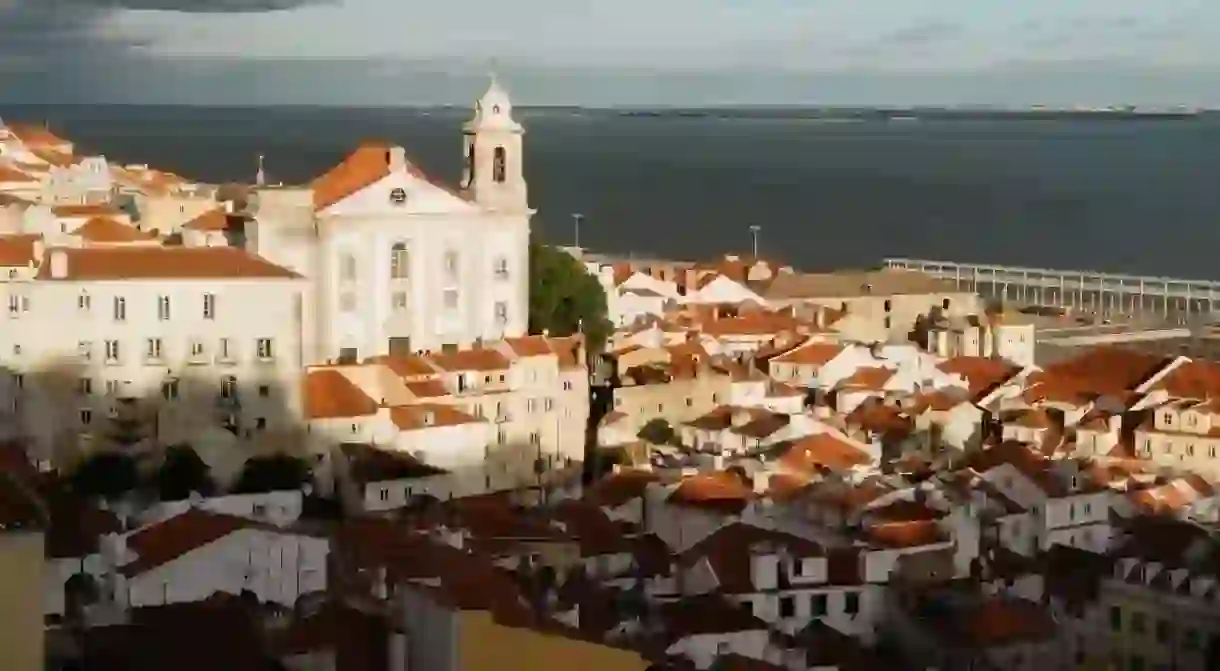Stay Curious: Experience Lisbon From Your Living Room

As staying in becomes the new normal, Culture Trip invites you to indulge in a spot of cloud tourism. Experience the sights and sounds of a place – without even leaving your home. Grab a pastel de nata and discover the best of Lisbon from the comfort of your sofa.
Whether your trip to Portugal was postponed or you’ve visited before and want to refresh your memory, there’s a way to discover it without leaving home. So sit tight, hum along to Portuguese songs and explore the city through its art, cuisine and music.

Watch Os Verdes Anos
Lisbon has changed quite a bit since Paulo Rocha shot the movie Os Verdes Anos in 1963, but that’s the beauty of this film. You get to see the old Lisbon, when people gathered at social clubs for mid-afternoon dance sessions, and monuments like the Elevador de Santa Justa had no tourists in sight.
The film tells the story of a village boy called Júlio who moves to Lisbon to try and make a living as a shoemaker. Once in the city, he meets Ilda, a local housekeeper, and eventually, they fall in love. But Júlio struggles to adapt to his new life in the city, so different from his small town; in the 1960s, Lisbon was already changing from a place where horses still roamed the outskirts to the modern European city it is today.
The film was one of the first examples of the Portuguese New Cinema (Cinema Novo), a movement inspired by the French New Wave and Italian Neorealism. You can see traces of it in the way the camera follows the characters around the city, taking you through its streets and inside its cafés, clubs and homes of the ’60s.

Read Lisbon: What the Tourist Should See by Fernando Pessoa
Born in Lisbon in 1888, Fernando Pessoa is one of Portugal’s most famous writers. He’s renowned for having multiple pseudonyms (with different personalities), under which he wrote thousands of poems and stories. If you’ve been to Lisbon before, you might have spotted a statue of him next to the Café A Brasileira.
Pessoa spent most of his childhood in South Africa but returned to Lisbon in 1905. In 1925, he wrote Lisbon: What the Tourist Should See, a guidebook for travellers, which is still pretty accurate. While most of his work is in Portuguese, this book came out in English first, so it’s clear that he wanted to share his tips with those people outside of Portugal.
In this book, Pessoa takes readers on a tour of Lisbon, passing through some of the city’s main sights, such as Terreiro do Paço, Mosteiro dos Jerónimos and Alfama. Even if you can’t be there in person, you can imagine what these places look like from Pessoa’s detailed descriptions of the buildings and their surroundings. He also reveals some of Lisbon’s lesser-known spots, like the Palácio da Ajuda and the gardens of Campo Grande. Of course, some things have changed since the 1920s, so it’s also a chance to travel back in time.

Take a virtual tour of Lisbon’s street art
There is urban art scattered all over Lisbon, covering anything from recycling bins to parking lots and whole buildings. Until you get to see these colourful pieces in real life, your best option is to take a virtual tour of the city. Luckily, the Urban Art Gallery (GAU) has made this pretty easy with these online exhibitions of Lisbon’s street art.
The gallery brings you closer to the famous artworks that have become a symbol of Lisbon. Some pieces are abstract, and others depict significant moments in the city’s history, such as the Carnation Revolution. You can go through the albums, organised by artists, themes and locations, or scroll through all the images at once. Most of them include a description to help you learn more about the artwork.

Listen to Lisboa Menina e Moça by Carlos do Carmo
When speaking of Lisbon’s music, you can’t help mentioning fado. It’s the traditional Portuguese music style, and while most songs are sad in tone, there are happy tunes, too. Lisboa Menina e Moça is one of those songs.
Sung by Carlos do Carmo (a renowned fado singer), it’s a love letter to Lisbon, in which he compares the city to a woman. Menina and moça are two words for a young lady in Portuguese. In his lyrics, he takes you through the city’s neighbourhoods, from Alfama to Graça, and invites you to walk along the Tagus River and try medronho, a strong Portuguese fruit spirit.
In 2014, Carlos do Carmo received a Latin Grammy Award, and to honour that, a couple of Portuguese singers got together and made this version of the song, matching the lyrics with images of the city.
Make some pastéis de nata
Don your chef’s hat, roll up your sleeves and try baking some pastéis de nata. These delicious custard tarts are a famous staple of Portuguese cuisine and a must-try when you visit Lisbon. You can find them in cafés and pastelarias all over the city, but when you can’t make it there, it’s easy to bake them at home.
Gather eggs, milk, flour, butter, sugar and cinnamon to make these sweet treats. If you don’t have these ingredients in your kitchen, make sure to get them on your next outing to the shop. Then, assuming you have a muffin tin, you’re all set to recreate these tarts. This recipe gives you step-by-step instructions on how to make the dough and the filling from scratch. It also includes a video, in case you get stuck. For the complete Lisbon experience, pour yourself an espresso and imagine sitting outside a kiosk (a balcony will do) while you take a bite of your freshly baked pastéis.














